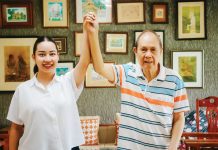
LONELINESS almost always grips the human soul. It comes at various ages, but hearing the stories of the middle-aged and the elderly, I thought initially that it is mostly likely to hit these life stages. But boy, am I wrong!
An article published by ©Take Root Therapy 2024 says many elements influence loneliness and the intensifying “loneliness epidemic.” While it is true that this topic came about during the pandemic when people were isolated, and loneliness became inevitable — do you remember that era? — “However, evidence suggests that rates of loneliness have been increasing since the 1970s, and Dr. Vivek Murthy, the US surgeon general, first brought this to the forefront as a public health concern in 2017.”
“Loneliness is one of the most common human experiences but is also one of the least talked about.” True. Why are people embarrassed, worse, ashamed to say they are lonely? Is loneliness akin to weakness? It is an emotion and one of the most common human experiences, so, why not talk about it? What’s even sadder is when people we confide in dismiss our feelings of loneliness. We feel diminished and rejected. We forget that even Jesus Christ was lonely.
Loneliness varies per individual and is influenced by a combination of factors. “Often, though, people become lonely because of some type of life transition or lifestyle choice that reduces the number of perceived connections with other people, both physically and emotionally.” An example is when you relocate to another city — this is a major life shift that cuts your social and personal connections because relocation means you leave your friends, intimate circles, and even family behind; retire or change jobs — another major life alteration because as you retire, you suddenly lose a huge chunk of your corporate family that served as your social and professional contacts and where you had developed bonds of friendship over the years; start or end relationships — another major life switch that thrusts you into the tricky and stressful adjustment phase of new relationships or the accompanying brokenness and heartache of a terminated relationship; among others.
While these experiences sting no matter how short or long, over time we hope to start and cultivate new relationships to replace the ones we lost. But this requires time, so, we need to be patient. It cannot be hurried.
It is accurate that “When we imagine the archetypal ‘lonely’ person, we might think of an older adult who lives alone and doesn’t leave their home other than to run the occasional errand.” I’m sure each Filipino and Boholano family has this archetypal lonely person. “While older adults do struggle with loneliness and are heavily impacted by social isolation, there is research that shows an inverse relationship between age and loneliness.”
Get this: “A 2020 study found that while 79% and 71% of the Gen Z and Millennial respondents considered themselves lonely, only 50% of the Baby Boomers felt the same way” — do tell who the Baby Boomers in the house are! This outcome “supports the theory that technology, social media, and remote work drive these figures.” In some research, it was suggested that “older adults have had time to develop coping skills to allow them to manage time alone or apart, while adolescents are still working to develop these skills and may struggle more with loneliness as they may experience it as rejection.”
Alfea Bautista, a millennial, expressed that loneliness is a common experience among LGBTQ+ individuals but explained that “everyone’s experiences of loneliness are different and unique.” Alfea said when pangs of loneliness hit her, she normally acknowledges the loneliness, identifies what she needs, and takes appropriate action. She observed that as she grew older, she also found ways to cope with loneliness including keeping a prayer life, staying in contact with family, and being open to the harsh realities of choosing her gender including discrimination, judgment, and having a hard time finding a partner. “Studies also suggest that older LGBTQ+ members are more likely to be single, live alone, and have lower levels of contact with family or relatives,” Alfea stated.
Meanwhile, Rae Dawn Maestrado, a Gen Z, shared that her generation has no “proper third spaces” — a place where you can hang out with other people apart from home and work or school. “Our generation doesn’t have that. Sure, we can treat our phones like a third space but it’s not equivalent to having people around you in real time.”
Rae lamented that “our cities and municipalities, heck the modern world itself, are no longer designed for human connection. We don’t have a lot of fun public spaces to congregate. It’s often malls that dominate our spaces now. And to meet, let’s say at a cafe, you are required to buy something. Whereas years before, like the baby boomers — you guys could get together anywhere (at least that’s what I think).”
Rae said, “The Gen Zs’ dependence on our phones and other gadgets has made us relatively content with being alone and ‘doomscrolling’ for hours further contributing to our loneliness.” She revealed that even in the dating scene, “It’s getting harder and harder to build a real connection with people since it’s extremely different these days.”
Coming from a millennial and a Gen Z — the digital natives — who co-exist with the older generations, I would say the statistics prove the theory right: There are indeed more lonely people in this era.
***
The writer hosts Woman Talk with Belinda Sales every Saturday, 10 a.m. at 91.1 Balita FM Tagbilaran City. Email at belindabelsales@gmail.com. X @ShilohRuthie./PN







